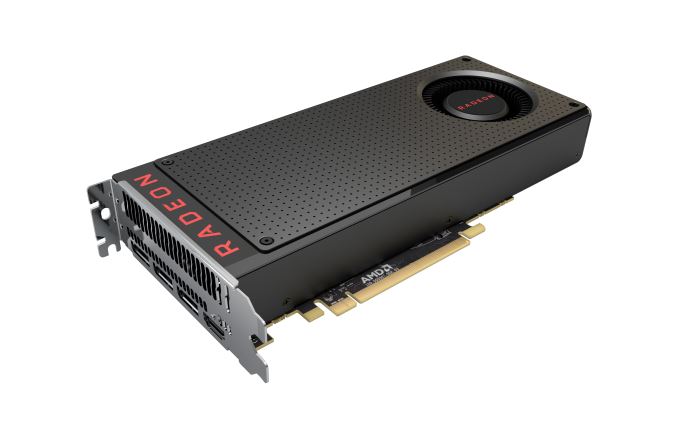AMD Releases Statement On Radeon RX 480 Power Consumption; More Details Tuesday
by Ryan Smith on July 2, 2016 5:05 AM EST
Following up on this week's Radeon RX 480 launch, there has been some questions raised about the power consumption of the card. This is after some sites whom directly tap the power rails feeding the card discovered that at least some of their samples were pulling more than the standard-allowed 75W over the PCIe slot and/or 6-pin PCIe external power connector.
To that end, it would appear that AMD's staff is working weekend duty, and they have just sent over the following statement.
As you know, we continuously tune our GPUs in order to maximize their performance within their given power envelopes and the speed of the memory interface, which in this case is an unprecedented 8Gbps for GDDR5. Recently, we identified select scenarios where the tuning of some RX 480 boards was not optimal. Fortunately, we can adjust the GPU's tuning via software in order to resolve this issue. We are already testing a driver that implements a fix, and we will provide an update to the community on our progress on Tuesday (July 5, 2016).
If some of the data is to be believed, these cards are exceeding 150W total at times, which would mean there is either something causing them to run in the wrong power state, or they are just outright exeeding their power limit and need to be throttled back. As we don't do per-rail testing I don't have anything meaningful to add at this second, but it will be very interesting to see how AMD responds next week.
Update 07/06: AMD has since released their status update, which you can find here.










181 Comments
View All Comments
Daniel Egger - Saturday, July 2, 2016 - link
I totally don't buy that excuse. When did the addition of current sensors become rocket science again? If you ask a mainboard manufacturer nicely they might even do the modification for you...D. Lister - Saturday, July 2, 2016 - link
They aren't even doing their normal full reviews and you're asking them to do ADDITIONAL work? Yeah, that'll work.edzieba - Saturday, July 2, 2016 - link
Testing in a closed case is not incompatible with power rail testing. Put the card on a flex riser to give easy access to the power traces, and tap them there. The card itself remains inside the case, just in a lower slot. Same with the PEG power leads, which are much easier to splice into. Place testing equipment outside the case, routing test leads through a drive bay or PCIe slot blanking plate.Daniel Egger - Saturday, July 2, 2016 - link
Or you could modify the board to place current sensors into the power rails, even current sensors on top of power carrying traces might work depending on the board layout.BlueBlazer - Sunday, July 3, 2016 - link
Aye, and does not cost much at all, example https://www.amazon.com/PCIE-Powered-Flexible-Exten... quite cheap and very little modification required to tap the power lines. Other reviewers like HT4U tested using a PCI Express riser http://ht4u.net/reviews/2016/amd_radeon_rx_480_rev... looks so simple, cut the power traces and tap into the power lines...YazX_ - Saturday, July 2, 2016 - link
so another 5 mins to hook the equipment and do a power draw test on a benchmark is much of a hassle from someone whose main job to do that?! now i know how the GTX 970 3.5GB slipped and no one has even noticed it.Kevin G - Saturday, July 2, 2016 - link
I agree that testing in a case is the proper ways to test for a formal review as that is how end users will be utilizing the cards. However, I would consider investigating this issue to be more of an exception as this explores a very specific issue that needs a very specific test setup. I'd be interesting in Anandtech running the same type of testing that measure power consumption at the slot level as another comparison point.bug77 - Saturday, July 2, 2016 - link
Because lately they don't do much testing at all, that's why.BlueBlazer - Saturday, July 2, 2016 - link
Not just Toms Hardware, also PC Perspective as well. Listen to their explanation here https://www.youtube.com/watch?v=ZjAlrGzHAkI Perhaps Anandtech should start similar testing with graphics cards as well in the future...PeckingOrder - Saturday, July 2, 2016 - link
Anandtech is AMD biased, they sweep anything negative towards them under the rug.